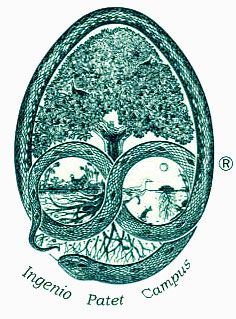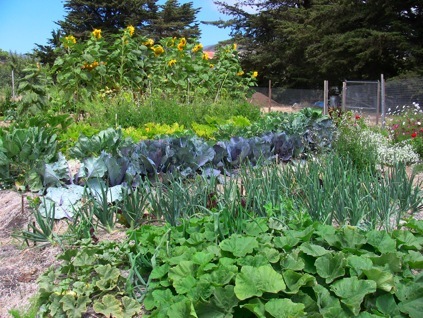Regenerative Design
Sustainability is no longer enough. We need to do more than sustain damaged landscapes- they need to be regenerated. Working with Nature and natural patterns is the only way we can repair and restore landscapes in an efficient manner. Landscapes can perform critical ecosystem services like water filtration and cycling, as well as provide humans with water, food, fuel, fiber, and shelter. Everyone wins.
Permaculture
Permaculture Design is the Art and Science of creating beautifully regenerative human settlements.Working with nature as opposed to against it, the goal is to create systems that support themselves and create surplus yields through the relative placement and succession of elements in the design.

For example, a nitrogen-fixing tree (NFT) is planted next to a fruit tree to provide nitrogen, shelter, and mulch. Time and energy is saved just by placing the two elements together, because we need not provide supplemental fertilizer and the mulch material is close at hand.
The NFT shelters the young fruit tree, and is eventually overtaken by it. Permaculture Design begins with setting our intention based on three Ethics:
Ethics of Permaculture
- Care for the Earth
- Care for the People
- Sharing of Surplus to support our actions and each other
The Principles as outlined by Bill Mollison, David Holmgren and others, are filters which we apply to the process in order to create a contextually appropriate design.
Principles of Permaculture
- Form follows Function
- Stability lies in Diversity
- Work with Nature
- Make the Least Change for the Greatest Good
- The Problem is the Solution
- The Yield of a System is Unlimited
- Everything is Connected
- Location is Relative
- Cycles create Opportunities
Design Process
The first step in a Permaculture Design is to look at the Clients’ Needs, and the Resources they may have on site to provide for these needs. With a cross check we can solve many needs this way, just by re-arranging elements and placing them relative to each other.

We then observe the system we will be designing and, coming from the Ethics and applying the Principles, we solve the need that is presented with the materials at hand, or the next closest location.
Waste and pollution in a system is an under utilized resource. Waste for one is food for another. We cycle nutrients, so that we can use them to their next highest energy level before we let them leave the system.
Humanity’s Basic Needs Broken Down
1. Water: Design for storage. Maximize use. Minimize waste.
Water is the most primary resource that we need. Without it we would not live long, and with a supply of poor quality our health suffers.You can provide for your own water needs by harvesting the rain. Nature provides it for us, all we have to do is catch it.Groundwater recharge is an immediate necessity for our area. We cannot continue to pump water out of the ground that is hundreds or thousands of years old and not have a plan to replace it.Grey-water is a waste that is a resource. All of the water that flows from your sinks and showers can be used to produce copious amounts of food.From the suburban tract home to the cattle ranch, we can help you design water systems that store and re-store Nature’s most precious resource.
2. Food: Eat locally, act globally.
Local food production is one way to reduce the effects of global warming. By growing our own we not only have the benefit of higher nutrition and satisfaction, but we reduce our dependency on petroleum and all of the mess we create around it.Imagine creating a sustainable food production system for your home or ranch. Let us help you create a Food Forest or Integrated Agricultural Ecosystem on your property.Fruits, vegetables, and livestock can flourish on any scale. With appropriate design, most of our food needs can be supplied in a very small space with minimal maintenance.My experience in design will save you time and money spent on mistakes. Allow me to share with you what I have learned about growing my own food.
3. Energy: Make yer own!
You can also provide for your own energy needs.Biogas digesters convert decomposing organic matter into methane which can be used to heat your food and water, or run your car!Solar Photovoltaic Systems pay themselves off in 5 to 7 years, and may actually give energy back to the grid.Wind turbines harvest the energy potential of a consistent force that is supplied by Nature.Composting converts organic “waste” into valuable soil amendment and produces methane and heat which can be utilized.
4. Health: Be healthy, be happy
The point of all of this is to improve our quality of life while preserving and creating abundance. By providing for ourselves not only do we empower ourselves but we receive a different energy, one of more quality. This is reflected in our health and happiness.We can live by example. Our actions and emotions really do affect the world. If we live peacefully we radiate peace, and create peace.
